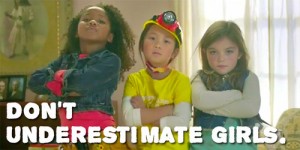Everyone thinks “knowledge is power”. If you have a certain knowledge, you are automatically more powerful. But unless you have a way to put that knowledge into practice, the knowledge is useless.
In the case of our marketing class, I felt that I was able to learn a lot more through the project than just listening to lectures during classes. By learning the concept of segmentation, targeting and positioning in class and then actually applying it to a company that we all recognized and are able to relate to, I was able to fully grasp the materials. The company that my group chose was the Toronto Dominion Bank. And as a current customer of TD bank, I felt that I was able to learn a lot more about the bank through the company’s point of view.
The group that I worked with was very dynamic in personality and skillsets. Once we started working together, we realized that each one of us brings something to the table that other members of the group do not have- one team member had many creative ideas while the other was very organized and so forth-. I enjoyed working with such a dynamic group and felt that because we were so different, we were able to generate a flow of creative ideas that we were able to apply to the project. During the project, everyone contributed during meetings and completed their part by the deadline that our team unanimously decided upon.
During part B of the assignment, when we were completing the SWOT analysis, we felt that it was incredibly hard to come up with weaknesses of the company. The researching process took a long time, however we found that once the researching component of the project was completed, the following sections flowed smoothly as we understood the company well.
For the last part of the assignment, we were all dreading the fact that we had to make a video as no one in our team had any experiences in filming or editing videos. However, everyone still tried to contribute and put forth efforts to learn how iMovie works as well as contribute in skit ideas and so forth.
Overall, I enjoyed working with my team and thought that the project was a great way to enhance our learning of the concepts learned in class.








